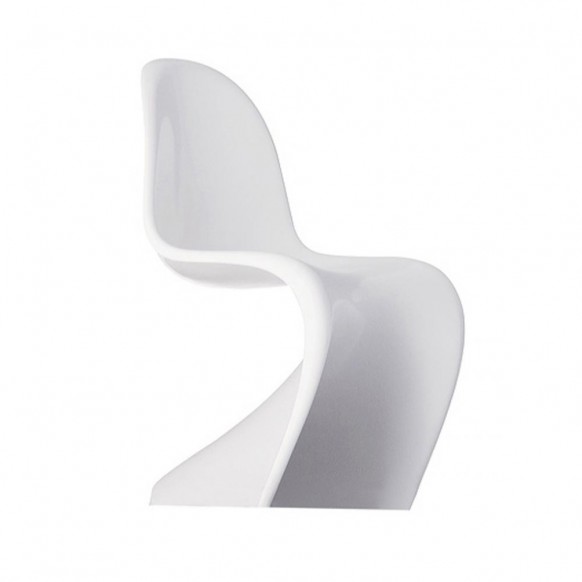"To me, the Bertoia is like a little black dress in a woman's wardrobe: universal, timeless and absolutely necessary."- Christophe Pillet, Italian designer. High praise, considering this iconic chair is actually the result of an experiment in, what the cool kids call, practical art (I must remember that one..). The frame of this chair is built from welded steel in either polished chrome or bonded Rislan finish, but the key material in this design is.. nothing? "If you look at these chairs, they are mainly made of air, like sculpture. Space passes through them" said Bertoia. In 1962, the chair was awarded the Certificate of Merit by the American Institute of Architects and the Design Centre Stuttgart Award. Pretty convincing.
Eames
DSW Chair (Eiffel Chair), Charles and Ray
Eames, 1950.
This particular wooden-legged
design is one in a series of chairs with the same seat shell by Charles and Ray
Eames. The lightweight but durable polypropylene seat contour minimises
pressure points and supports posture. This chair is available in a variety of bright
tones, and coordinates with the Eames DAW armchair.Cherner Classic Walnut Side Chair, Norman Cherner, 1958.
What an testament to what can be done with veneered plywood! Despite its simple design, the slim-waisted back support adds a slight delicacy. Because of its veneered design, this classic has been reproduced in several finishes.

Wishbone Chair, Hans J. Wegner, 1949.
This chair's raw,
natural tone combined with its simple steam-bent structure makes it the ultimate
in midcentury rustic elegance. It's lightweight, comfortable and its open back
allows for circulation and ease of movement. While working on a chair design
project in college, my lecturer used to remind me that sometimes the simplest
designs derive from the most thought and this bad boy is no exception; more
than 100 steps carried out by hand in the production of this chair, and its
handcrafted seat is woven from 120 metres of paper cord.
Tulip Chair, Eero Saarinen, 1955.
Eero Saarinen Finnish-American
architect-designer claimed this iconic design came to fruition as he wanted to
"get rid of the slum of legs". A "slum" indeed!? This chair
is very cool, very retro, very Brady Bunch. The moulded fibreglass form is cast
on an aluminium base. For both extra comfort and extra jazziness, coloured
loose cushions are also available.

Eames LCW Chair, Charles
and Ray Eames, 1946.
In typical Eames
fashion, this chair is available with either wooden and metal legs. In the
greatest of ergonomic wisdom, this chair's moulded wood laminate seat and
backrest echoes the shape of the human body.

This chair's industrial design is well suited to both a rustic, country and a sleek, contemporary setting-- which I always think is the beauty of furniture designed to celebrate raw, natural materials. Lightweight, stackable and suitable for outdoors; these chairs are a practical choice for commercial use, such as for cafes. Brightly-painted Tolix chairs are used in Jamie Oliver's Jamie's Italian restaurant here in Dublin, and I can vouch for their comfort!
Another retro polypropylene classic! This self-supporting chair was one of the first to be made from a single piece of material.


No comments:
Post a Comment